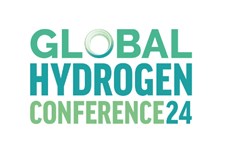DNV and Equinor develop software for carbon capture and storage
Published by Bella Weetch,
Editorial Assistant
Hydrocarbon Engineering,
The transition to a low-carbon society is reliant upon bringing in new and growing technologies, such as carbon capture and storage (CCS) technology to reduce the CO2 emissions to the atmosphere, and Norway’s Equinor is a leader in this area. There is a need for reliable consequence models for safety assessments, design of barriers and documentation of CCS safe design. To ensure the highest safety standards, it is critical to have tools that simulate what actually happens if accidents occur. This is used as basis for design and to mitigate consequences in the event of accidental release. Equinor has partnered with DNV for the next three years to further develop DNV’s KFX™ CO2 computational fluid dynamics (CFD) software for this purpose.
The software simulates accidental releases of CO2 from storage facilities or leaks from pipelines, trucks or ships. CO2 is usually transported and stored in liquid or supercritical state. It is much heavier than air and a release of concentrated CO2 will therefore typically follow the contours of the terrain and accumulate in pits, valleys and lower-lying grounds.
KFX CO2 will take complex thermodynamics and interaction between geometry and terrain into account, including dry-ice formation and sublimation of CO2. “The development project, funded by Equinor, will bring these detailed simulation capabilities to KFX CO2, supporting a new level of safety for handling captured CO2”, says DNV’s Project Manager, Kjell Erik Rian.
“The rapid development of this technology is important not only for DNV and Equinor, but also for society,” says Kenneth Vareide, CEO of DNV’s business area Digital Solutions. “CCS is an important part of the transition to a low-carbon economy where safe operations are based on accurate, detailed and extensively validated simulations,” he says.
“To make the most cost-efficient design decisions without compromising on safety, it is necessary to have as detailed simulations as possible and DNV is committed to collaborate closely with customers in the areas of hydrogen safety, CO2, ammonia and LNG, enabling the accelerated energy transition journey,” says Trond Evanger, Head of Section CFD Solutions.
DNV’s experience using advanced CFD simulation tools in safety analyses for full-scale CO2 capture projects is based on many years of development work on the KFX software, which was acquired by DNV in 2017. Equinor has been a key partner in the development of the software for 25 years.
Read the article online at: https://www.hydrocarbonengineering.com/the-environment/18112021/dnv-and-equinor-develop-software-for-carbon-capture-and-storage/
You might also like
Viridi Energy signs 20-year agreement with Énergir
Viridi Energy, a renewable natural gas (RNG) platform, has signed a 20-year offtake agreement with Énergir, L.P.


